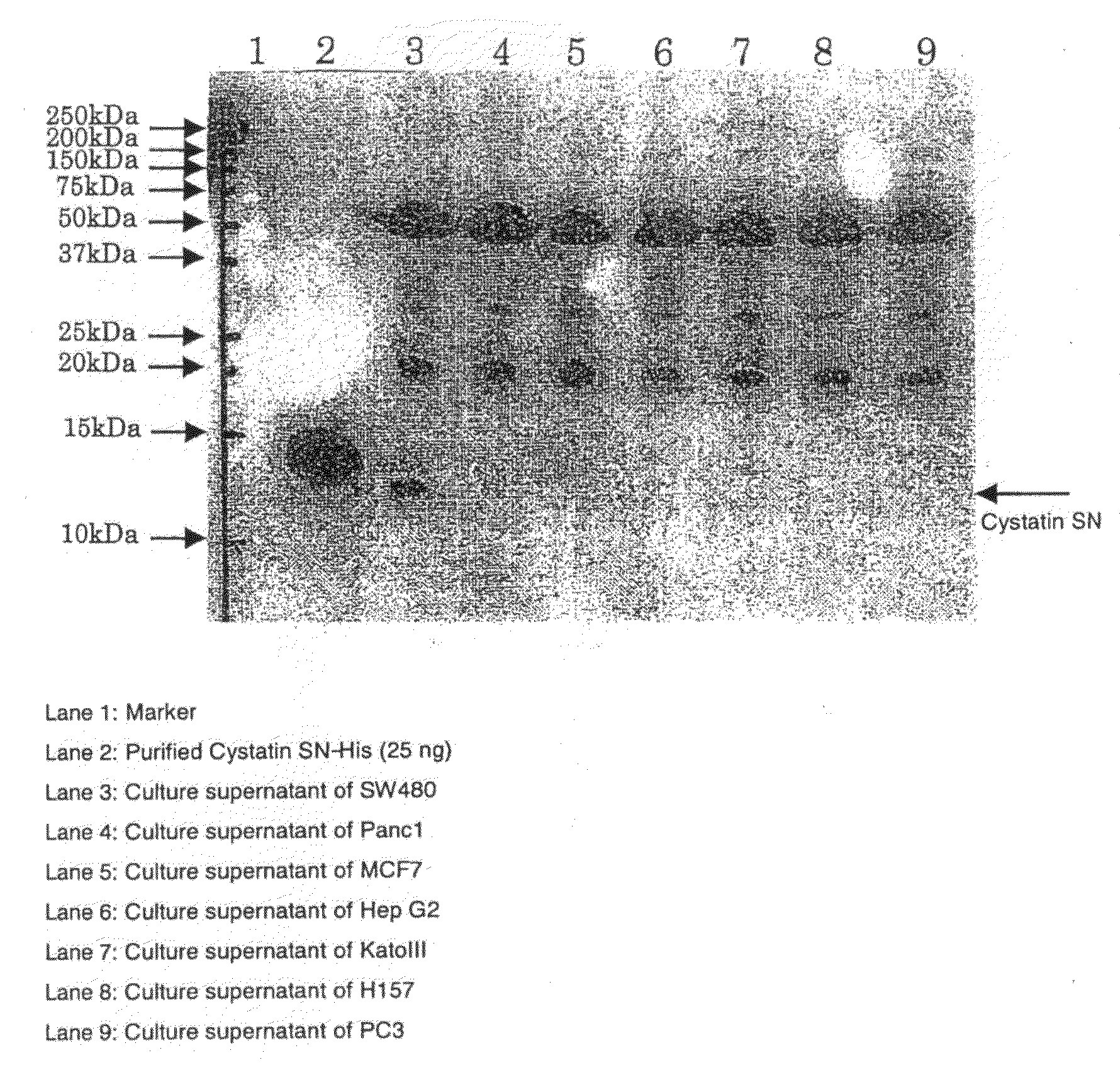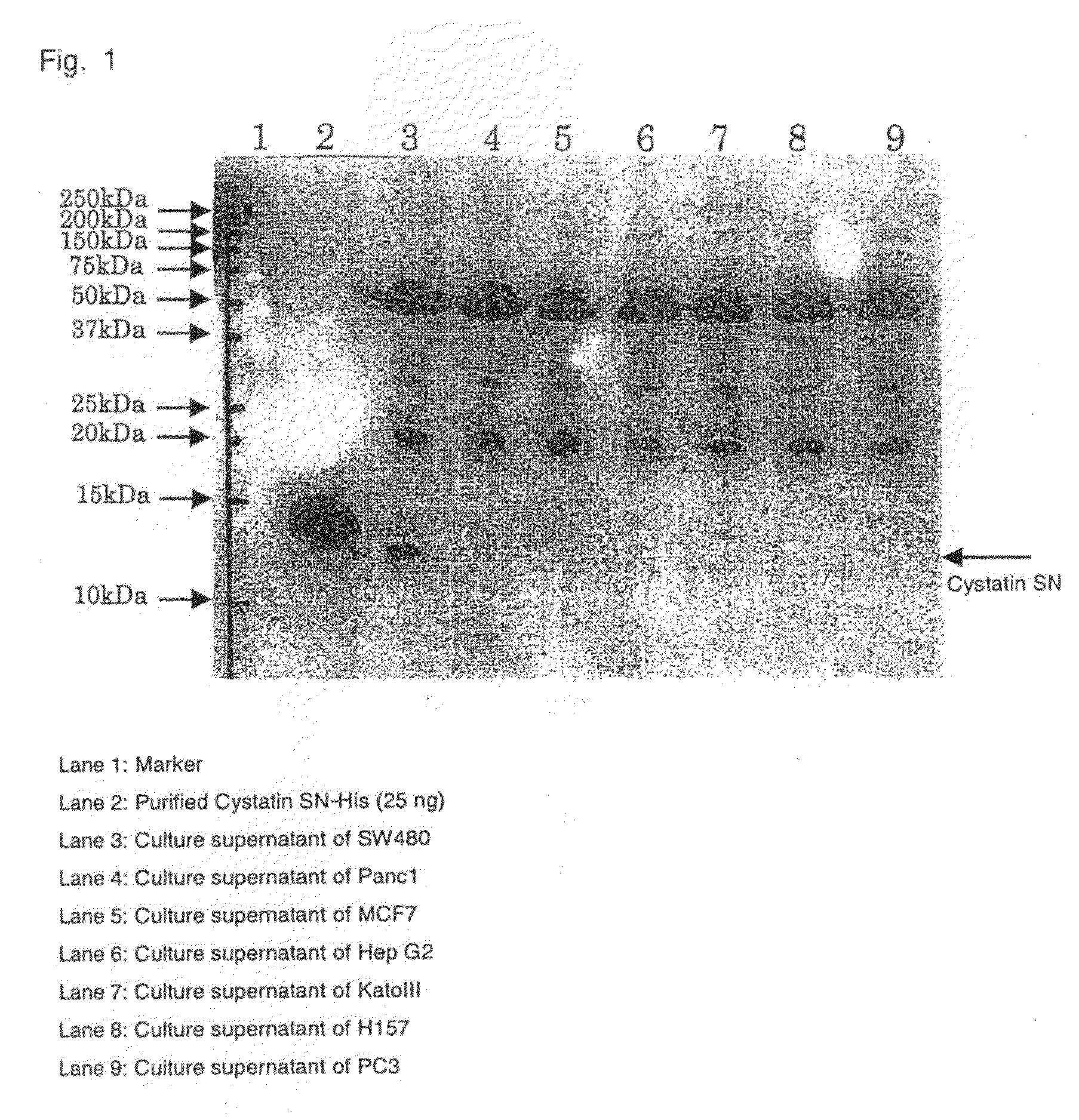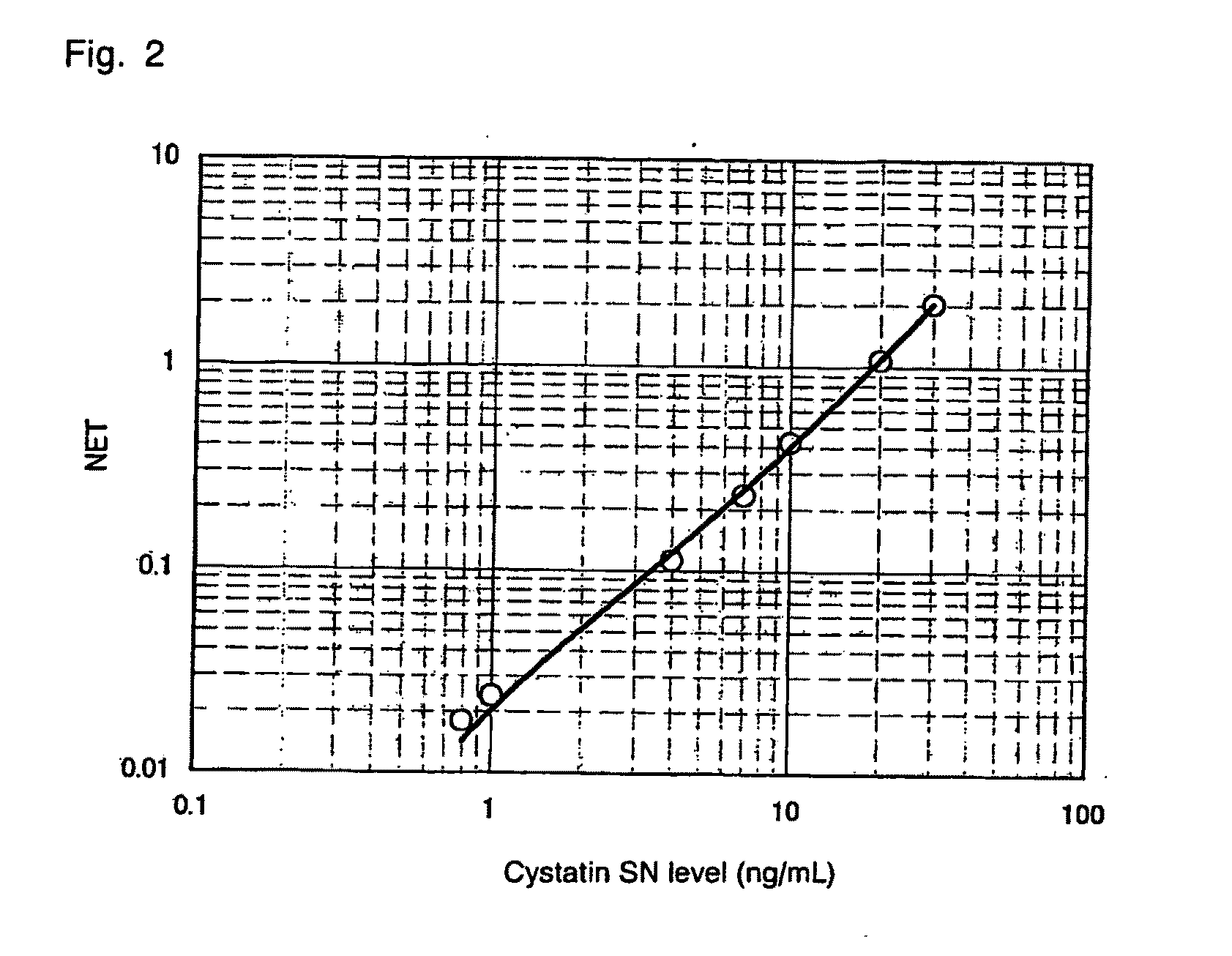Drug for diagnosing large intestinal cancer and/or polyp, observing postoperative course and monitoring recurrence
a technology for large intestinal cancer and/or polyp, applied in the direction of immunoglobulins, instruments, peptides, etc., can solve the problems of poor accuracy, increased probability of postoperative recurrence, and poor accuracy of methods (i) and (ii), which can be performed in a simple manner, and can solve the problem of afflicting patients but also raising a problem in terms of medical economy,
- Summary
- Abstract
- Description
- Claims
- Application Information
AI Technical Summary
Benefits of technology
Problems solved by technology
Method used
Image
Examples
example 1
[0105]For producing monoclonal antibodies of cystatin SN, a corresponding antigen was produced. Firstly, cloning of a sequence including the full-length ORF region of cystatin SN was performed. A single-strand cDNA library of the salivary gland expressing cystatin SN was prepared in the same procedure as described above. Through employment of the cDNA library as a template and primers Cystatin SN-f (SEQ ID NO: 3) and Cystatin SN-r (SEQ ID NO: 4) designed from GenBank No. (NM-001898), a full-length ORF gene was isolated through PCR. Cystatin SN-F (Hind) primer (SEQ ID NO: 5) and Cystatin SN-R (His-BamHI) primer (SEQ ID NO: 6) were produced so as to include the full-length ORF gene of the cystatin SN. Through employment of the full-length sequence of the cystatin SN as a template and the primers, a fragment of interest was amplified through PCR, and the fragment was inserted into a phCMV vector (Stratagene). Specifically, after nucleotide sequence analysis t...
example 2
Preparation of an Antigen of Cystatin SN
[0106]Transfection was performed according to a protocol of TransIT (TaKaRa). Specifically, CHO cells (1×105 cells) were placed on a 6-well dish on the previous day of transfection and cultured overnight. Next day, the expression vector phCMV-Cystatin SN-His (8 μg) and TransIT reagent (16 μL) were mixed with serum-free DMEM (100 μL), and the mixture was incubated at room temperature for 20 minutes. Subsequently, the cultured cells were transfected with the mixture. Alternatively, when FUGENE 6 was employed, transfection was performed according to a protocol of Roche Diagnostics. Specifically, CHO cells (8×105 cells) were placed on a 10-cm dish on the previous day of transfection and cultured overnight. Next day, the expression vector phCMV-Cystatin SN-His (8 μg) and FUGENE 6 reagent (16 μL) were mixed with serum-free DMEM (400 μL), and the mixture was incubated at room temperature for 20 minutes. The cultured cells were transfected with the mi...
example 3
Production of Monoclonal Antibodies against Cystatin SN
[0108]A suspension of Cystatin SN-His (100 μg on the protein basis) in PBS was mixed with a Freund's complete adjuvant. The mixture was intraperitoneally injected to BALB / c mice for initial immunization. In the second immunization, Cystatin SN-His (50 μg on the protein basis) prepared in the same manner as described above and a Freund's incomplete adjuvant were mixed together, and the mixture was intraperitoneally injected to the mice. In final immunization, Cystatin SN-His (50 μg on the protein basis) was intravenously injected to the mice. Spleen cells were prepared from each BALB / c mouse, and the cells were fused with mouse P3U1 cells through a routine method employing polyethylene glycol. Screening was performed through ELISA employing Cystatin SN-His, to thereby produce antibodies which specifically bind to Cystatin SN-His.
[0109]Through screening, antibodies PPMX0201 and PPMX0202, which are monoclonal antibodies having high...
PUM
| Property | Measurement | Unit |
|---|---|---|
| PET | aaaaa | aaaaa |
| time-lapse | aaaaa | aaaaa |
| length | aaaaa | aaaaa |
Abstract
Description
Claims
Application Information
 Login to View More
Login to View More - R&D
- Intellectual Property
- Life Sciences
- Materials
- Tech Scout
- Unparalleled Data Quality
- Higher Quality Content
- 60% Fewer Hallucinations
Browse by: Latest US Patents, China's latest patents, Technical Efficacy Thesaurus, Application Domain, Technology Topic, Popular Technical Reports.
© 2025 PatSnap. All rights reserved.Legal|Privacy policy|Modern Slavery Act Transparency Statement|Sitemap|About US| Contact US: help@patsnap.com



